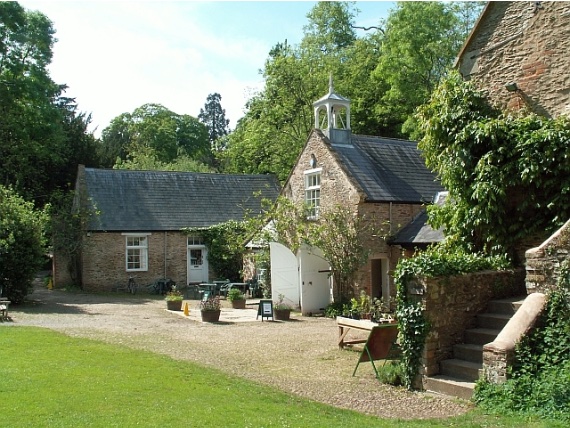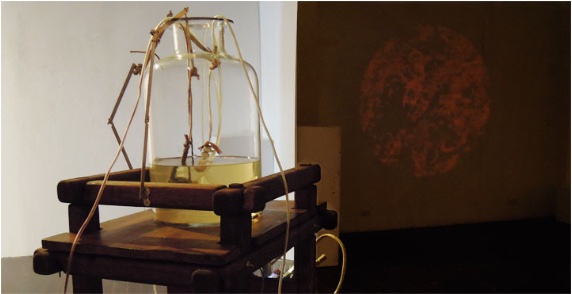No matter how much science is popularised or people are educated about how it works, the cliché of the mad scientist has never gone away, and probably never will. From Frankenstein to Marvel, the character of the eccentric and obsessive researcher is a favourite of fiction, but also appears in sensationalist stories about real people. One who enjoys this aura is British experimental physicist Andrew Crosse (17 June 1784 – 6 July 1855), whose pioneering experiments with electricity so terrified his neighbours that some thought he was performing some kind of demonic magic. But while there is no doubt that Crosse earned the legend that has swirled around him, his persona has proliferated in the world of the mysterious and the occult at the cost of his true biography being exaggerated. with dubious claims, such as that he inspired the novel Frankenstein, or outright falsehoods, such as that he created life out of nothing.
Two years after Crosse’s death, in 1857, his second wife Cornelia published a book entitled Memorials, Scientific and Literary, of Andrew Crosse, the Electrician, in which she described her husband’s life and work. She recounted that on one occasion, during a political meeting in which Andrew used to participate, his speech was greeted by the farmers with whistles and boos. Someone asked who the gentleman was, and a farmer replied: “Crosse, the thunder and lightning man; you can’t go near his cursed house at night without danger of your life; them as have been there have seen devils, all surrounded by lightning, dancing on the wires that he has put up round his grounds.”
A garden turned into a laboratory
Although the scene is reminiscent of another horror film stereotype, that of the old man warning of danger to those who don’t listen, it shows how spectacular and terrifying the experiments of Crosse, who was also known as the “Wizard of the Quantocks”—after the Quantock Hills—must have been. And no wonder: at his Fyne Court estate, near Broomfield in Somerset, he suspended up to two kilometres of copper wire between poles fixed to the tallest trees, connected to two large metal balls, one outside and one inside the music room, whose organ gallery contained 50 Leyden bottles, the first capacitors; it is estimated that each charged Leyden bottle could produce up to 60,000 volts. Added to this was a monstrous array of over 2,000 voltaic piles.

At the University of Bristol, archaeologists Stuart Prior and Tim Mowl set out a few years ago to investigate Fyne Court, now open to the public through the National Trust historic preservation organisation. Although the main building of Fyne Court burnt down in 1894, the archaeologists found remnants that still remain of that immense garden laboratory. “When atmospheric conditions were favourable the in-surge of electrical power was so great that batteries would charge and discharge each time with a monstrous flash and a massive explosion of sound,” they wrote in the journal Garden History. “What impressed Crosse’s many visitors was the easy way in which he manipulated these deadly forces with his insulated rod, directing them into his batteries and experimental jars, or out harmlessly into the earth.” The equipment could be charged and discharged some 20 times a minute, each time with the noise of a cannon; assuredly, even with Fyne Court being a large and relatively secluded property, Crosse was not the sort of neighbour anyone would wish for.
An early passion for electricity
This might have seemed an unlikely occupation for a law student at Oxford University, the son of a wealthy family, who was preparing to become a lawyer when, at the age of 21, he was orphaned and inherited his parents’ estates. And yet a love of science in general, and electricity in particular, was an interest that he developed early on, from the age of 12 when he attended a natural science course. At school he made his first Leyden bottle, and as master of Fyne Court he abandoned his studies to experiment in chemistry, mineralogy and, above all, electricity, the fashionable innovation of the time.

Crosse invested the family fortune in his passion for electricity. In 1807, he undertook his first experiments in electrocrystallisation, in which he tried to electrically stimulate the formation of calcareous structures similar to those he had observed in a local cave. But it was his experiments on the electrical polarity of the atmosphere that first made his name known through his friend and colleague George Singer, who described them in his 1814 publication Elements of Electricity and Electro-chemistry, a treatise widely read by his contemporaries. These findings popularised his name and attracted the interest not only of the scientific community: despite a bad reputation among his neighbours, and as his wife recounted in her biography, “the poor in the neighbourhood used to go to Fyne Court to be electrified for paralysis and rheumatism, and in almost every case the effect was highly beneficial.”
During that time, Crosse had no contact with the scientific community: “He had no scientific friends with whom to communicate; he lived at Broomfield in perfect intellectual isolation,” wrote Cornelia. He devoted his time to science and to writing poetry, and did not go out much, although he was politically active; an admirer of Napoleon and a liberal, he advocated the spread of knowledge and the education of the poorer classes. His relative isolation contributed to his legend, although he later forged relationships with other prestigious scientists: he befriended Michael Faraday, who, like him, had no formal scientific training. His eminent teacher, the chemist Humphry Davy, also visited Fyne Court. Another frequent visitor was Ada Lovelace, who is said to have had an affair with Crosse’s eldest son John, although she was married at the time.
The Legend of Frankenstein
Undoubtedly, the bombshell that boosted the resonance of Crosse’s name, from his time to the present day, was an 1836 electrocrystallisation experiment in which he observed the appearance between the poles of the circuit of something entirely unexpected: tiny creatures, insects or mites, “under conditions usually fatal to animal life, namely, in highly caustic solutions and out of contact of atmospheric air,” wrote Cornelia, stressing that this phenomenon only occurred under certain conditions and not others. Crosse discussed these results at a meeting with friends, including a newspaper editor, who published them without permission. The news spread from Britain to the continent and, according to Cornelia, “the world was startled.”
But if the news satisfied “the credulity of those who love the marvellous,” something that applies to our times, it also provoked reactions that are just as familiar today: those of the haters. Crosse was vilified, receiving a letter in which one gentleman called him a “disturber of the peace of families” and a “reviler of our holy religion.” However, Crosse never claimed that the mites came out of nowhere. Although Louis Pasteur was still a quarter of a century away from definitively disproving spontaneous generation, in a letter to a lady who took an interest in his experiment, Crosse wrote: “I have never in thought, word, or deed, given any one a right to suppose that I considered them as a creation, or even as a formation, from inorganic matter.” Indeed, in the same letter he related that mites had appeared in other of his experiments. Today it is assumed that they were due to contamination of his instruments.

The misconception that Crosse’s experiment succeeded in creating life has further embellished his legend by attributing to him the inspiration for Mary Shelley’s Frankenstein. However, the novel was published in 1818, some 18 years before the appearance of Crosse’s mites. In fact, Mary and her fiancé, the poet Percy Bysshe Shelley, had mutual friends with Crosse, such as Davy and the poet Robert Southey. According to Stuart Prior, the archaeologist, on 28 December 1814, before Mary wrote her immortal work, Crosse delivered a lecture at Garnerin’s London lecture rooms, encouraged by Davy. Mary’s diary confirms that she and Percy attended: “Go to Garnerin’s. Lecture on Electricity; the gasses & the Phantasmagoria, return at ½ past nine Shelley goes to sleep.”
But alas, she did not even mention the name of the lecturer, nor did she record any impression of it anywhere. At the time, the couple were keenly interested in the phenomenon of electricity and had conversations about it with some scientists of their time, but not with Crosse, for the record. Nor did Cornelia Crosse make any mention of this possible inspiration, which she would not have omitted to do had she had the slightest notion of it, in a work so laudatory of her husband’s achievements; in the opening of the book, the widow boasted how her husband had predicted the telegraph in 1816, decades before its invention: “I prophesy that, by means of the electric agency, we shall be enabled to communicate our thoughts instantaneously with the uttermost ends of the earth.”
Crosse certainly deserves his place in the history of science in his own right; as his colleague and friend Henry Minchin Noad wrote in the dedication of his 1844 work Lectures on Electricity, as someone to whom “electrical science is indebted for so rich an accumulation of valuable facts.” But without the need to dress him up as Frankenstein.
Comments on this publication